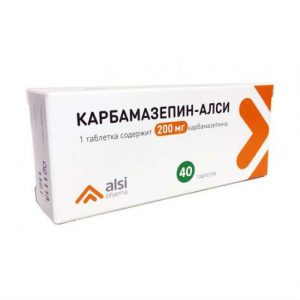Description
Release form
film-coated tablets dispensable tablets
Packing
Per pack 100 pcs.
Pharmacological action
Madopar is a combined antiparkinsonian drug containing a dopamine precursor and a peripheral decarboxylase inhibitor. In parkinsonism, neurotransmitter brain dopamine is formed in the basal ganglia in insufficient quantities. Levodopa is a metabolic precursor of dopamine and, unlike the latter, penetrates well through the BBB. After oral administration of levodopa, it is rapidly decarboxylated to dopamine in both cerebral and extracerebral tissues. As a result, most of the injected levodopa does not reach the basal ganglia, and peripheral dopamine often causes side effects. Therefore, blocking extracerebral decarboxylation of levodopa is necessary. This is achieved by the simultaneous administration of levodopa and benserazide, a peripheral decarboxylase inhibitor.
Indications
Parkinson’s disease, including: in patients with dysphagia, with akinesia in the early morning hours and in the afternoon, patients with phenomena of depletion of the single dose effect or increase in the latent period before the clinical effect of the drug.
Contraindications
Decompensated endocrine disruption decompensated liver dysfunction decompensated renal dysfunction (except patients with restless legs syndrome receiving dialysis) diseases of the cardiovascular system in the stage of decompensation mental illness with psychotic component closed-angle glaucoma concurrent with MAO, a combination of inhibitors of MAO type A and MAO type B under the age of 25 years old women of childbearing -age, not using reliable methods of contraception pregnancy lactation (breast feeding) hypersensitivity to the drug.
Use during pregnancy and lactation
Madopar is absolutely contraindicated in pregnancy and women of childbearing age who do not use reliable methods of contraception due to a possible violation of the development of the skeleton in the fetus.
If pregnancy occurs during treatment, the drug should be discontinued in accordance with the recommendations of the attending physician.
If you need to take Madopar during breastfeeding, you should stop breastfeeding, due to the lack of reliable data on the penetration of benserazide into breast milk. It is impossible to exclude the danger of improper skeletal development in a newborn.
Special instructions
In patients with hypersensitivity to the drug, appropriate reactions may develop.
Patients with open-angle glaucoma are advised to regularly measure intraocular pressure, since theoretically levodopa can increase intraocular pressure.
Side effects from the gastrointestinal tract, possible at the initial stage of treatment, can be largely eliminated if Madopar is taken with a small amount of food or liquid, as well as if the dose is increased slowly.
During treatment, you need to monitor liver and kidney function, blood count.
Diabetes patients often need to control their blood glucose levels and adjust the dose of hypoglycemic drugs.
If surgery is necessary with general anesthesia, Madopar therapy should be continued until surgery, with the exception of general anesthesia with halothane. Since the patient receiving Madopar may experience fluctuations in blood pressure and arrhythmias during halotan anesthesia, Madopar should be discontinued 12-48 hours before surgery. After surgery, treatment is resumed, gradually increasing the dose to the previous level.
Madopar cannot be undone abruptly. Abrupt drug withdrawal can lead to a ² Ñmalignant antipsychotic syndrome ² Ñ (fever, muscle rigidity, as well as possible mental changes and an increase in serum creatine phosphokinase), which can take a life-threatening form. If such symptoms occur, the patient should be under the supervision of a doctor (if necessary, should be hospitalized) and receive appropriate symptomatic therapy. It may include reappointment of Madopar after appropriate assessment of the patient’s condition.
Depression can be either a clinical manifestation of the underlying disease (parkinsonism, restless legs syndrome), or it can occur during treatment with Madopar. The patient should be carefully monitored in terms of the possible occurrence of mental adverse reactions.
Composition
1 tab. contains levodopa 100 mg, benserazide 25 mg (in the form of benserazide hydrochloride 28.5 mg)
Dosage and administration
Dispersible tablets (Madopar fast-acting tablets / dispersible / 125 ) need to be dissolved in a quarter glass of water (25-50 ml), the tablet will completely dissolve after a few minutes to form a milky-white suspension that should not be taken later than half an hour after the tablet is dissolved. Since a precipitate can form quickly, it is recommended to mix the solution before taking it.
Parkinson’s disease
Inside, at least 30 minutes before or 1 hour after a meal.
Standard dosing regimen
Treatment should be started gradually, individually selecting doses to the optimal effect.
Initial therapy
At an early stage of Parkinson’s disease, Madopar treatment is recommended to be started with 62.3 mg (50 mg of levodopa + 12. 5 mg of benserazide) 3-4 times a day. With tolerability of the initial dosing regimen, the dose should be slowly increased depending on the patient’s response.
The optimal effect is usually achieved with a daily dose of 300-800 mg of levodopa + 75-200 mg of benserazide, taken in three or more doses. It may take 4 to 6 weeks to achieve the optimum effect. If you need to further increase the daily dose, this should be done at intervals of 1 month.
Maintenance therapy
The average maintenance dose is 125 mg (100 mg of levodopa + 25 mg of benserazide) 3-6 times a day. The number of receptions (at least three) and their distribution during the day should provide the optimal effect.
Side effects of
From the blood system: rare cases of hemolytic anemia, transient leukopenia, thrombocytopenia. In patients taking levodopa for a long time, it is recommended to periodically monitor the blood formula, liver and kidney function.
From the gastrointestinal tract: nausea, vomiting, diarrhea, isolated cases of loss or change in taste, dry mouth.
From the skin of her appendages: rarely – itching, rash.
From the cardiovascular system: arrhythmias, orthostatic hypotension (worsens after a decrease in the dose of Madopar), arterial hypertension.
From the side of the nervous system and mental sphere: agitation, anxiety, insomnia, hallucinations, delirium, temporary disorientation (especially in elderly patients and in patients who had a history of these symptoms), depression, headache, dizziness, in later stages treatment sometimes – spontaneous movements (such as chorea or athetosis), episodes of “solidification”, weakening of the effect by the end of the dose period (the phenomenon of “exhaustion”), the phenomenon of “on-off”, severe drowsiness, episodes of sudden drowsiness, increased manifestations of the syndrome of “restless legs”.
On the part of the body as a whole: febrile infection, rhinitis, bronchitis,
Laboratory indicators: sometimes – a transient increase in the activity of liver transaminases and alkaline phosphatase, an increase in gamma-glutamyl transpeptidase, an increase in blood urea nitrogen, a change in the color of urine to red, darkening when standing.
On the part of the body as a whole: anorexia
Storage conditions
At a temperature not exceeding 25 ° C.
Expiration
3 years.
Form of Treatment
tablets dlya rassas vaniya
F. Hoffmann-La Roche Ltd, Switzerland




